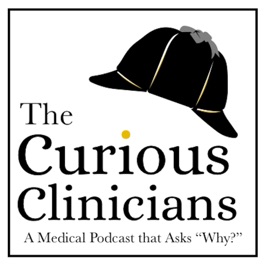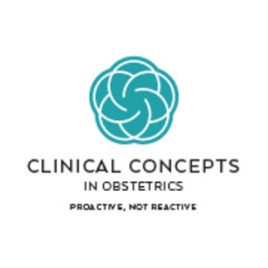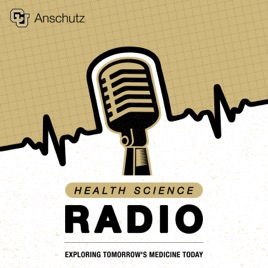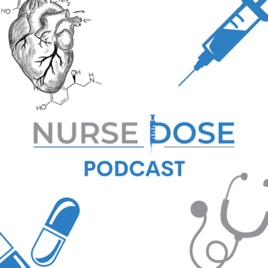
Advertise on podcast: Critical Care Scenarios
Rating
4.6 from
Country
This podcast has
150 episodes
Language
Explicit
No
Date created
2019/12/13
Average duration
24 min.
Release period
7 days
Description
Join us as we talk through clinical cases in the ICU setting, illustrating important points of diagnosis, treatment, and management of the critically ill patient, all in a casual, "talk through" verbal scenario format.
Podcast episodes
Check latest episodes from Critical Care Scenarios podcast
TIRBO 55: Bowel regimens
2024/02/21
How I make patients poop.
Find us on Patreon here!
Buy your merch here!
Lightning rounds 37: Weaning the deliriosedated patient (SCCM roundup)
2024/02/14
A roundup of opinions from attendees at SCCM’s 2024 Critical Care Congress in Phoenix on strategies for rescuing the patient stuck in a loop of deep sedation and agitation.
Thanks to Pat Posa, Martha Roberts, Juliana Barr, Kelly Drumright, and Ben Lassow for their input.
Resources
* ICU Liberation.org
* ICU Delirium
* ICU Rehab Network
more
TIRBO 54: Documenting POCUS studies
2024/02/07
How to document your ultrasound findings.
Find us on Patreon here!
Buy your merch here!
Episode 70: Airway evaluation for non-anesthesiologists, with Jed Wolpaw
2024/01/31
We discuss assessing patients prior to intubation or other airway management, including both elective and emergent circumstances, with Dr. Jed Wolpaw, anesthesiologist and intensivist from Johns Hopkins, anesthesiology residency program director, and host of the ACCRAC podcast.
Find us on Patreon here!
Buy your merch here!
Takeaway lessons
* Edentulous (toothless) patients are usually easier to intubate, but harder to mask ventilate. Heavy beards are harder to mask (can you trim it, or cover it with a Tegaderm?), larger neck circumferences, and larger tongues likewise.
* Consider the history, particularly involving the head and neck anatomy. Is there surgical history here? Jaw or oral surgery? Prior trachs or oral/neck radiation? Rheumatoid arthritis or Down syndrome (which can cause atlanto-occipital instability and may warrant trying to limit any forced neck extension)?
* Start by looking into the patient’s mouth (mouth open, sitting up, no “aah”):
* Mallampati score (do you see the entire uvula, part of it, soft palate, or hard palate only?)
* How is the dentition? Remove dentures if present. Are there loose teeth?
* Is there an excess of soft tissue in the mouth (large tongue, etc)?
* Evaluate the thyromental distance (thyroid bump to chin); 3 cm (or fingerwidths) suggests a more “anterior” airway.
* Evaluate neck flexion and extension (passively if necessary) to appreciate limitations in neck mobility.
* If the patient is able, evaluate how well the jaw can protrude/prognath: ability to bite more of the upper lip with the lower teeth is a good thing. This is probably the single most predictive test for airway difficult, although it usually requires patient cooperation.
* Review the chart (or ask the patient) for prior documentation of intubation or anesthesia to determine if they have a history of a difficult airway. This can require some interpretation of the context and who was intubating previously. Good practice when documenting: write exactly what you did, and if it was difficult, write why! If you used a technique like awake intubation, a bougie, etc for elective or training reasons, document that reason so they don’t earn a label of a difficult airway forever.
* The STOP-BANG score is used to predict post-anesthesia airway obstruction (i.e. OSA), and probably has some association with faster deoxygenation and difficult mask ventilation, but is generally not super relevant for intubation.
* A patient with any concern for difficult intubation warrants consideration for factors also contributing to difficult LMA placement or cricothyrotomy. LMAs are difficult to place when the mouth opening is very small (about 2 inches) or the oral-laryngeal anatomy is unusual, and crics are difficult when the neck anatomy is impossible (eg a superimposed tumor, goiter, or heavily distorted anatomy). A patient who cannot have a cric may warrant an awake intubation to avoid the risk of inducing a patient who cannot be rescued.
* Obesity is not a predictor of anatomically difficult intubation. Mask ventilation may be a little harder if there is increased oropharyngeal soft tissue. It is a predictor of physiologic difficulty (faster desat), though.
* For emergent intubations: confirm code status, briefly evaluate the head/neck/mouth, use video laryngoscopy.
more
TIRBO 53: Who needs an arterial line?
2024/01/24
Arterial lines are resuscitative tools.
Lightning rounds 36: Nurses are from Venus
2024/01/17
Bedside nurses and providers (physicians, PAs, NPs) tend to see the world differently, much of it driven by their training and the systems they work within. We chat about reconciling this and how to best function as a team.
more
TIRBO 52: Reliable is better than perfect
2024/01/10
In general, medical decisions that avoid error are better than those that optimize care.
Episode 69: Head and neck surgery with Alexandra Kejner
2024/01/03
We discuss head and neck surgery with Dr. Alexandra Kejner, otolaryngologist at the Medical University of South Carolina specializing in transoral robotic surgery, reconstructive surgery including microvascular free tissue transfer, salivary neoplasms, and sialoendoscopic procedures.
Find us on Patreon here!
Buy your merch here!
Takeaway lessons
* Robotics has enabled much less invasive approaches to many head and neck procedures.
* Major airway procedures create edema, and there is always risk for bleeding, so patients often remain intubated overnight.
* The other common ICU indication is a free flap, a portion of tissue (potentially including skin, subcutaneous tissue, muscle, even bone) removed from a remote site and transplanted into the head and neck area, with vessels anastomosed. These are at risk of failure and require close monitoring.
* Most of these procedures will involve placing a tracheostomy, and potentially a PEG (or NG). This facilitates both surgical access and early recovery.
* Tumors are superficially resected with adequate margins, then reconstruction begins. Meanwhile, exposure of deeper structures and deeper resection occur, which may involve a jig to guide the removal (prepared in advance from imaging), and a matching cut to prepare the flap tissue. Lymph nodes are removed en bloc. Then the flap is transplanted and vessels anastomosed (at least one robust artery and vein), using microsurgery and teeny sutures (often 8-0 nylon).
* As a supplement to the clinical exam, an implantable Doppler monitor is occasionally left in place to augment post-op monitoring of perfusion, as well as sometimes a Vioptix near-infrared spectroscopy device which performs real-time tissue oximetry.
* On POD 0-1, hourly nursing monitoring of the flap is usually needed, with periodic provider checks. Changes in the exam (swelling, turgor, cap refill, color), signal, or bleeding may require return to the OR for revision. A single ICU night is the norm, although comorbidities are common and may require a longer stay if the stress of surgery unmasks other problems.
* Laryngectomy may be performed, involving removal of the larynx (voice box), leaving a blind pouch; the lungs no longer connect to the upper airway in this case, and the entire team should be aware of this anatomy, as the patient cannot be intubated or their airway otherwise managed from above.
* Most flaps will be on a baby aspirin and enoxaparin, but occasionally may use a heparin drip.
* Most will receive three doses of dexamethasone, both to reduce edema and to treat any adrenal insufficiency.
* Chlorhexadine or salt water oral rinses are performed to keep the operative site clean.
* Multimodal pain management is needed for both the oral site and the donor flap site.
* A drop in the Vioptix signal from the initial post-op reader, neck swelling, or difficulty breathing (dyspnea, hypoxia, etc) all warrant immediate involvement of the surgical team for danger to the airway or the flap. Flaps might also turn purple from venous congestion, sometimes a little later, also a surgical emergency.
* A questioned flap might be scratched to see if it bleeds (which is good).
* A patient in shock might need vasopressors, fluid, or to be hypotensive, none of which are great for a flap.
more
TIRBO 51: Critical care problems are syndromes
2023/12/27
The core disorders of critical care are mostly syndromes, not diseases. What should this mean to us?
Lightning rounds #35: Brain death updates, with Ariane Lewis and Matthew Kirschen
2023/12/20
Discussing the new 2023 AAN/AAP/CNS/SCCM Pediatric and Adult Brain Death/Death by Neurologic Criteria Consensus Practice Guideline, with the joint first authors: Dr. Ariane Lewis, neurointensivist, professor of neurology and neurosurgery at NYU Langone, director of neurocritical care, and chair of the Langone ethics committee, and Dr. Matthew Kirschen, pediatric neurointensivist and associate director of pediatric neurocritical care at the Children’s Hospital of Philadelphia.
Find us on Patreon here!
Buy your merch here!
Takeaway lessons
* Ancillary testing (the idea of “confirmatory” testing is not optimal) is not a replacement for the clinical exam, and any confounding factors to the exam that can be corrected (for example, by waiting longer for temperature or drugs to normalize) must be—this cannot be bypassed by skipping to an ancillary test.
* Drug levels that may confound the exam should be measured whenever possible, and when there is doubt or question, the monitoring period should be increased, even if this delays the time until declaration of death.
* Drug use that results in clear anoxic brain injury can be compatible with declaring brain death based on the later, even if the exact nature of the former is not established.
* Temperature must be above 36c during the exam, and above 35.5c for the last 24 hours.
* Brain death testing in the setting of anoxia after cardiac arrest should be delayed for at least 24 hours after arrest.
* A minimum of one clinical exam should be performed in adults, but one or more additional exams may be useful. A minimum of two are recommended in pediatrics. Local protocol should be followed. No specific interval of waiting between exams is recommended in adults (the important “waiting” should occur prior to performing the first exam), although a 12-hour minimum interval in pediatrics is recommended, mainly for historical reasons.
* Advanced practice providers may perform the exam if appropriately trained and credentialed.
* EEG is not recommended as an ancillary test, mainly because it primarily gives information on cortical electrical activity, which adds relatively little to a confounded clinical examination. Bloodflow tests like nuclear scintigraphy say something about perfusion to the brain (particularly when a lateral view is used), which is useful.
* Brain death testing must be done 100% right, 100% of the time. All providers should follow hospital policy and state law, not just guidelines when there is conflict. Ideally the two will match, but this can take time to catch up when new guidelines are released.
more
TIRBO #50: Never do anything once
2023/12/13
If you produce academic work, use the research to produce multiple products. Once is a waste.
Episode 68: Liver transplant with Meera Gupta
2023/12/06
We learn about liver transplant with Dr. Meera Gupta, transplant surgeon at the University of Kentucky Healthcare Transplant Center, and surgical director of the Kidney and Pancreas Transplant Program. We discuss eligibility, triage, the peri-operative course, and important post-op complications.
Find us on Patreon here!
Buy your merch here!
Takeaway lessons
* Liver transplant eligibility is based on need, not time on the list. The MELD score (MELD 3 now, including albumin) is used for this, with MELD >9 (historically >15) considered the cutoff for transplant potentially exceeding the risk of not transplanting.
* Livers can now be placed on warm perfusion pumps, allowing continued viability for much longer. This is mainly used in donors who died from cardiac death, those with high BMI or similar risks for primary non-function (i.e. the transplanted liver never starts working), and longer transport distances or expected operative times.
* Incision is a large right subcostal incision, extended as needed. The liver hilum is dissected, preserving the feeding vessels. Caval clamping may be tested, then the liver is removed. This anhepatic phase in minimized to 90), as diastolic BP tends to be low in most liver failure patients. Hepatopulmonary patients can rest on the vent a little longer and are expected to remain on oxygen for the time being. Patients can be fed once extubated and stable.
* High-dose steroids are loaded up front and then tapered, and oral immunosuppression initiated soon after.
* Some AKI is common. Colloid like albumin is favored early.
* Chronic thrombocytopenia is common and is monitored to determine when DVT prophylaxis can be started. Platelets >20k are targeted.
* If INR >2, vitamin K is given empirically. FFP is usually not given prophylactically. Bleeding is usually considered a little preferable to clotting, in terms of ease of treatment.
* A liver duplex is performed in the first 24 hours to ensure the new vascular supply is patent.
more
Podcast reviews
Read Critical Care Scenarios podcast reviews
Methriln
2023/12/10
Great podcast
Loved working with these guys. always super informative in person and love the podcast
NicACarr
2023/09/08
Bedside Nurse Finds Value
As a bedside PCU/ICU RN, I find these episodes so informative, so relevant and applicable, and a great benefit to the nursing community! I recommend t...
more
Lovelymo79
2023/08/02
Great resource for newbies!
I’m a new NP in thoracic and surgical critical care units and really enjoy these episodes! They are educational, informal and funny ! Will definitely ...
more
that_fatboi
2023/05/17
Great commuter education
I always love to listen whenever I’m driving to and from work. I’ve learnt a lot from this podcast. Thanks to you all.
rjpac
2022/08/18
Great podcast for critical care topics
Love their casual style with interesting guests. Easy to understand and relatable in clinic
Bobbi-in-the-hole
2022/06/27
We are not heros!
I LOVE this take!
I love my job, I get paid fairly.
I am not a hero
A. Kiser
2022/05/25
Love the content
There is no doubt that the proper work is being done to put these episodes together. I absolutely love the turbo episodes, specifically number nine. I...
more
A kizhakkedath
2022/01/24
ICU NP
A regular listener . Great topics and guests . I worked as an icu nurse for 13 yrs before starting my career as an icu np . Critical care is a team sp...
more
_Murse_Dreadd_
2022/03/07
Howdy, Howdy!!
Hey guys.. new listener here!
I’m a 5 year ICU Murse and current Adult-Geri Acute Care NP student. Just wanted to say I often struggle to listen to P...
more
NCCU NP
2022/01/09
Excellent
I appreciate they have honed in on this effective method of teaching. Well done!
Podcast sponsorship advertising
Start advertising on Critical Care Scenarios & sponsor relevant audience podcasts
You may also like these medicine Podcasts

4.9
289
18
Bed of Lies
The Telegraph

4.8
328
99
The Curious Clinicians
The Curious Clinicians

4.8
145
59
The Critical Care Obstetrics Podcast
Clinical Concepts in Obstetrics

4.8
910
603
Energized with Dr. Mariza
Dr. Mariza Snyder

4.9
35
126
Conversations with Mike Milken
Milken Institute

5
8
33
Health Science Radio
University of Colorado Anschutz Medical Campus

4.8
451
221
Dr. Matt and Dr. Mike's Medical Podcast
Dr Mike Todorovic

4.8
81
44
Nurse Dose Podcast
Sean BSN RN CCRN-CSC

4.9
190
95
Goat Talk with the Goat Doc
Cara Shepard

4.7
279
190
The Puberty Podcast
Peoples Media, The Puberty Podcast



